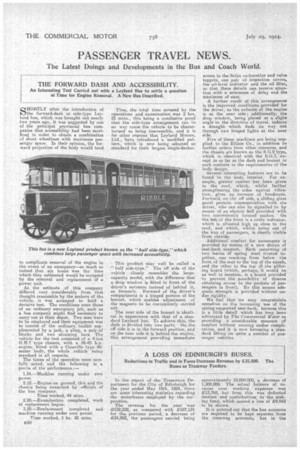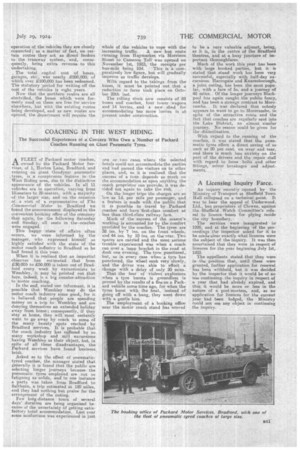A LOSS ON EDINBURGH'S BUSES.
Page 22

Page 23

If you've noticed an error in this article please click here to report it so we can fix it.
Reductions in Traffic anti in Fares Decrease Revenue by £35.000. The Buses as Tramway Feeders.
In the report of the Tramways Department for the City of Edinburgh for the year ended May 15th, 1024, there are some interesting statistics regarding the motorbuses employed by the corporation.
The revenue for the year was £132,238, as compared with £167,131 for the previous period, a decrease of £34,803, the passengers carried being approximately 10,000,000, a decrease of 1,500,000. The actual balance of revenue over working expenses was £13,768, but from this was deducted interest and contributions to the 'sinking fund, which caused a less of £9,043 to be shown.
It is pointed out that the bus accounts are required to be kept separate from the tramway accounts, but in the
operation of the vehicles they are closely connected; as a matter of fact, on certain routes they act as direct feeders to the tramway system, and consequently, bring extra revenue to this undertaking.
The total capital cost of buses, garages, etc., was nearly £200,000, of which over £100,000 has been redeemed. The statutory 'period for writing off the cost of the vehicles is eight years.
Now that the northern routes are all electrified, the buses which were f ormerly used on these are free for service elsewhere, but with the existing routes being developed, and as new routes are opened, the department will require the
whole of the vehicles to cope with the increasing traffic. A new bus route running from Haymarket via Morrison Street to Cameron Toll was opened on November let, 1923, the receipts per
bus-mile being 10d. This is a comparatively low figure, but will gradually improve as traffic develops.
With regard to the takings from the buses, it must be pointed out that a reduction in fares took place on October 28th last.
The rolling stock now consists of 88 buses and coaches, four tower wagons and 14 lorries, and a new shed for accommodating ten more lorries is at present under construction.






























